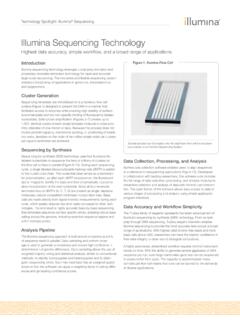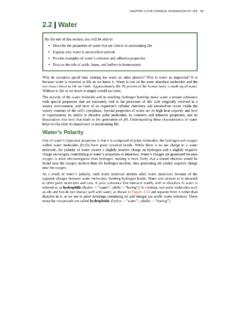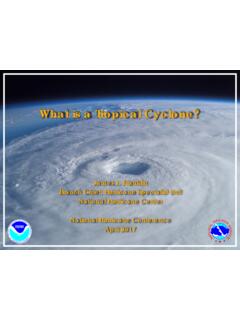Transcription of A GUIDE TO EXHIBIT DEVELOPMENT - Smithsonian Exhibits
1 A GUIDE TO EXHIBIT DEVELOPMENT23400 Pennsy Drive, Landover, MD 20785 Smithsonian to Smithsonian Exhibits GUIDE to EXHIBIT DEVELOPMENT . This document is intended for anyone interested in developing Exhibits , from curators planning their first EXHIBIT to seasoned EXHIBIT developers and DEVELOPMENT is a team sport. It takes a variety of skills to pull off a successful EXHIBIT , and collaboration is key. This GUIDE provides an overview of the EXHIBIT DEVELOPMENT process and offers tips on how to plan and create an effective EXHIBIT . While not intended to be definitive or prescriptive, this GUIDE provides suggestions and recommendations based on SIE s experience working with clients from a variety of backgrounds and Pennsy Drive, Landover, MD 20785 Smithsonian OF CONTENTSThe EXHIBIT DEVELOPMENT TeamRoles and ResponsibilitiesThe EXHIBIT DEVELOPMENT ProcessCreating an Interpretive HierarchyVisitor PreferencesInterpretive ToolsStructuring EXHIBIT TextExhibit Writing TipsScript Formatting SuggestionsGlossary of TermsAdditional Resources456789101213141543400 Pennsy Drive, Landover, MD 20785 Smithsonian EXHIBIT DEVELOPMENT TEAMAn EXHIBIT DEVELOPMENT team is made up of several key players.
2 Each person comes to the project with his or her own unique skills and perspectives and fulfills certain roles and responsibilities. Together, they strengthen the EXHIBIT by providing varied points of view and new teams are not restricted to the roles listed here. For example, an EXHIBIT team might include a museum educator, a program coordinator, or any other staff relevant to the project. But SIE recommends keeping the core team small to keep meetings manageable and streamline the decision-making team member may represent a larger group of specialists or stakeholders, with whom they meet at key stages throughout the project to provide updates and gather (s) or Subject-Matter Specialist(s)ProjectManagerAdditional Team MembersClientDesignerExhibit53400 Pennsy Drive, Landover, MD 20785 Smithsonian AND RESPONSIBILITIESThe client or project owner advocates for the organization. S/he communicates with key stakeholders, facilitates timely decisions, and ensures that the EXHIBIT reflects the organization s mission and vision.
3 S/he is usually the one who oversees the EXHIBIT s curator or other subject-matter specialist (such as a scientist, historian, etc.) advocates for the subject matter. S/he provides research and expertise, selects assets (including objects, images, and quotes), and ensures that the EXHIBIT s content is accurate. The project manager advocates for the project and the team. S/he guides the project through its various phases from concept to completion, determines if any additional staff or contractors are needed, and ensures that the EXHIBIT stays on schedule and on EXHIBIT developer advocates for the visitor experience and the story. S/he helps define the EXHIBIT s messaging, determines interpretive strategies, and ensures that the content is clear, concise, and compelling. The EXHIBIT developer may be deputized by the subject-matter expert to assist in finding images, quotes, stories, etc. The designer advocates for the physical and sensory design of the space.
4 S/he shapes the EXHIBIT s design and ensures that it communicates its messages effectively and is engaging and accessible to all team members may include education and programming staff, media and interactive developers, and other Pennsy Drive, Landover, MD 20785 Smithsonian EXHIBIT DEVELOPMENT PROCESSThe EXHIBIT DEVELOPMENT process has several distinct phases , each with its own content deliverables. Not every project includes every phase. This document focuses on the stages leading up to final design, at which point the EXHIBIT enters the fabrication phase. Interpretive Master PlanConcept Design (10%)Schematic Design (35%)Design DEVELOPMENT (65%)FinalDesign (100%)The Interpretive Master Plan phase identifies the EXHIBIT s stakeholders and target audiences, outlines key goals and objectives, establishes an interpretive hierarchy (see p. 7), and provides a road map forward for launching a new EXHIBIT . Content deliverables in this phase include the interpretive master Concept Design phase develops a single conceptual-level solution for content and design.
5 Content deliverables in this phase include the content brief, which provides an overview of the EXHIBIT and its main messages and identifies potential themes, subthemes, and interpretive strategies, such as interactives and media Schematic Design phase creates a framework for the EXHIBIT s content. Content deliverables in this phase include the outline, which breaks content into sections and subsections, and identifies key objects, images, quotes, and other elements to be Design DEVELOPMENT phase transforms content from an outline to a final script and articulates the design. Content deliverables in this phase include the EXHIBIT script, which weaves content into a narrative form, incorporating object labels, image captions, and credits. Depending on the EXHIBIT , there may be multiple rounds of drafts and Final Design phase finalizes the script, design details, and graphic layouts into a production-ready biddable package. Content deliverables in this phase include the final copyedited and proofread design files (graphic layouts) ready for Pennsy Drive, Landover, MD 20785 Smithsonian AN INTERPRETIVE HIERARCHYWhen planning a new EXHIBIT , SIE recommends creating an interpretive hierarchy to focus the EXHIBIT s main messages and provide a structure for content.
6 This is generally done during the Interpretive Master Plan phase. Exhibits start with a big idea. This is the overarching message that visitors should understand upon leaving the EXHIBIT . It is the basis for all the content key messages are a small number of take-away statements that directly support the big idea. They provide a conceptual framework that drives content critical questions support the key messages and shape the content goals for the experience. These are the questions that the EXHIBIT should answer for you have established an interpretive hierarchy, it s time to decide how to organize the EXHIBIT . Should the content be presented chronologically or thematically? How many sections are needed to tell the story? What are the potential themes and subthemes? These are questions that should be considered as the project enters the Concept MESSAGES3 CRITICAL QUESTIONS1 BIG IDEA 83400 Pennsy Drive, Landover, MD 20785 Smithsonian PREFERENCESThe most important thing to keep in mind when developing an EXHIBIT is your audience.
7 Who is the EXHIBIT intended for and how will you reach your audience effectively? Visitors come to museums with their own interests, needs, and desires. They learn in different ways and are drawn to different types of content. The Smithsonian s IPOP (Ideas, People, Objects, Physical) model categorizes visitors according to their preferences for experiences based on ideas, people, objects, and physical interaction. Successful Exhibits incorporate all four : Visitors seeking conceptual and abstract thinkingPeople: Visitors seeking emotional connectionsObjects: Visitors seeking visual language and aestheticsPhysical: Visitors seeking multi-sensory experiences93400 Pennsy Drive, Landover, MD 20785 Smithsonian TOOLSThe EXHIBIT DEVELOPMENT team has multiple interpretive tools at its disposal. Content can be expressed in many ways, not just with words. The team should consider all available options when deciding how best to present an idea. Whatever tools you use, remember to leave room for the visitor to reflect.
8 Exhibits are full of stimuli and can become overwhelming with too much are what make Exhibits unique. They lend authenticity and presence to provide visuals and illustrate ideas and concepts that may be difficult to explain in words. These include photos, maps, illustrations, charts, diagrams, elements, including video and audio presentations, add additional senses to the EXHIBIT and help bring the content to , including electromechanical and digital interactives, allow visitors to participate in the EXHIBIT in a hands- and minds-on way and learn by and tactile elements allow visitors to see and/or touch things that would not otherwise be accessible. Scale models enable visitors to interact with very large or small objects in new ways. A large object, such as a building or space shuttle, can be seen in its entirety. Conversely, the complexity of a tiny organism can be shown in an enlarged scale model. Te x t is a key element, but it s important to remember that it s just one of many tools.
9 Text is most effective when it s used strategically and graphically. Exhibits are not books on a wall. They should use all three dimensions of the space to tell the Pennsy Drive, Landover, MD 20785 Smithsonian EXHIBIT TEXTL ayering or chunking EXHIBIT text allows you to break big concepts into smaller, more manageable pieces of information. It also gives visitors more choice in what they read. Dense blocks of text discourage visitors from reading further. Research shows that people are more likely to read short paragraphs, 25 to 75 words long. Word counts vary from EXHIBIT to EXHIBIT , but some general guidelines are included below. Titles and headlines give visitors a quick preview of the content that follows and entice them to read on. Many EXHIBIT titles include a catchy or attention-grabbing headline followed by a subtitle explaining text introduces the EXHIBIT and communicates its main messages. (150 words maximum)Primary or section text introduces the section s main themes.
10 (100 words maximum)Secondary text or subtext supports the primary text and delves into subthemes. (100 words maximum)Sidebars provide fun and interesting facts and trivia. (usually 50 100 words)Object labels identify and/or interpret objects. These vary from tombstone labels, which provide basic identifying information, to group labels (sometimes called gang labels ) which interpret multiple objects. (50 words maximum)Image captions identify and/or interpret images. (usually 25 35 words)113400 Pennsy Drive, Landover, MD 20785 Smithsonian provide a first-person perspective and/or bring a topic to a human scale. Quotes can be used alone or can be pulled out in a label to break up text blocks. (usually one to two sentences)Credit lines provide credit information for objects and images. Often credit information for image use is mandatory, and the credit line must be used labels ask visitors questions and invite them to share their opinions.







